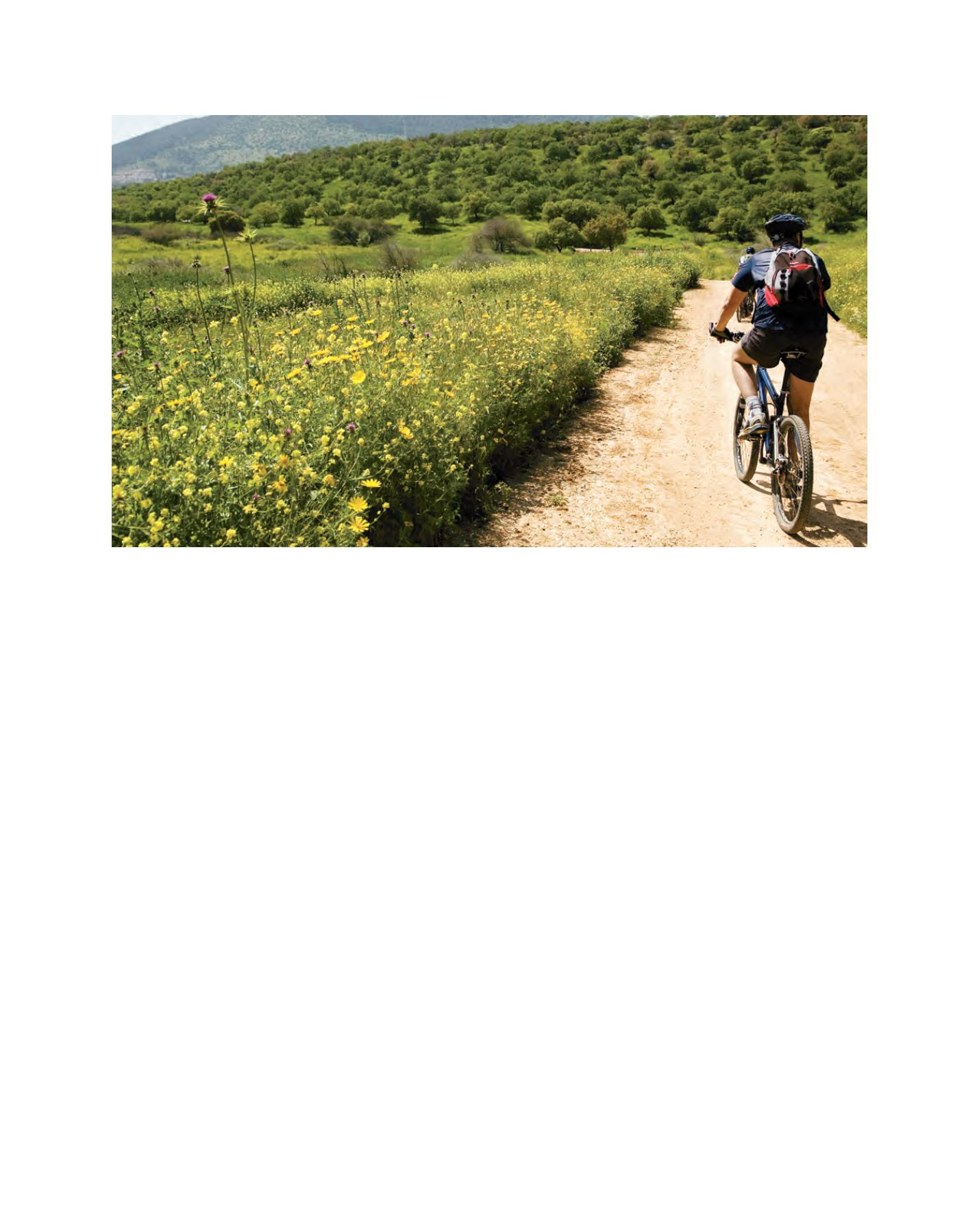

[
] 274
A ‘near-native’ type of forest ecosystem is currently
evolving, embodying elements of the pioneer afforesta-
tion plantings, mostly pines, along with a regenerating
native Mediterranean oak maquis.
Afforestation in semi-arid regions
Afforestation is practised on a large scale in the semi-arid
regions of Israel as part of the effort to combat deserti-
fication and to rehabilitate degraded areas, as well as to
provide ecosystem services for the people residing in the
Negev, the Southern region of Israel. It is based on plant-
ing drought resistant species and on proper management
of soil and water resources. There are two main planted
forest types in the Northern Negev, depending on the
topography and soil characteristics. The first type is
common pure, even-aged Aleppo pine forests, mostly
planted on hilly slopes. These forests were densely
planted in the past, about 3,500 seedlings per hectare.
Today, the planting density is about 1,500 seedlings per
hectare. These forests are gradually thinned to leave only
300 to 500 trees per hectare. The second type is sparse
planting (‘savanization’) of native species such as
acacias
and tamarisk, and exotic species, mostly
eucalypts
– up
to 200 seedlings per hectare, on moderate slopes, plains
and valleys.
This type of forest depends on water harvesting,
based on ancient methods used by farmers in the Negev
for food production. Today, modern techniques and
knowledge provide the soil with the moisture needed
to grow planted trees, natural shrubs and herbaceous
vegetation. Runoff water, harvested on slopes along
Afforestation and reforestation in Israel’s Mediterranean
and semi-arid zones
Israel is divided into three phytogeography regions: the Mediterranean
region, the Irano-Turanian region (semi-arid) and the Saharo-Sindi
region (arid). The Mediterranean region has a yearly average rainfall
of over 400 mm, which in the North may reach 1,000 mm or more.
The mean annual temperature is 19
o
C. This area is characterized by
natural Mediterranean oak trees, pistachio, Aleppo pine and carob.
The Irano-Turanian region extends from the Beersheba district in the
Northern Negev to the high elevations of the Negev Mountains. The
average rainfall in this region ranges from 150 to 400 mm and the mean
annual temperature is 20-23
o
C. Isolated pistachio (
Pistacia atlantica
)
and Christ’s thorn (
Zizyphus spina-christi
) are native to this region.
The Saharo-Sindic region extends in the south up to the Red Sea, and
includes the southern part of the Jordan Rift. The average annual rain-
fall varies in this region from 25mm to 150 mm and the mean annual
temperature is 25
o
C. Tamarisks grow sporadically or in groups in the
sandy and partly salty soil and
Acacia
in oases and wadis.
Afforestation and reforestation in the Mediterranean region
The first generation of the afforestation project in the Mediterranean
region was mainly based on pure, even-aged Aleppo pine forests,
which were established on hills and mountains. Aleppo pine was
later replaced by brutia pine because of its susceptibility to pests.
In the coastal plain and valleys,
eucalypts
dominate the planted
forests, which were the outcome of a massive national programme
to reclaim and restore Israel’s degraded Mediterranean landscape.
Over time, a more complex set of forest stands evolved resulting
from the re-colonization of native tree and shrub species into the
understory, the diversification of simplified stand structures, and the
planting of mixed species.
Thousands of scenic roads, observation points, hiking and biking trails and natural parks have been developed
Image: KKL Archive
















